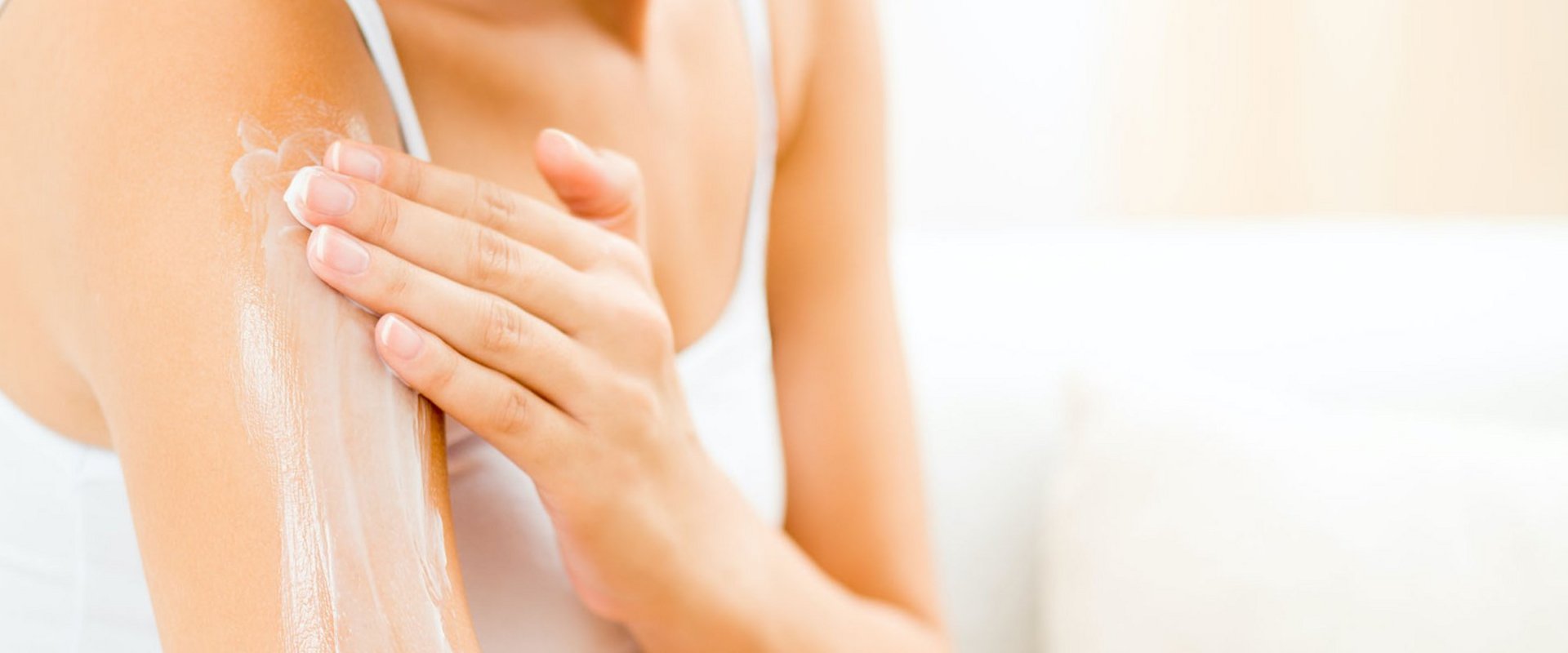PROBIOTIC SKIN CARE
The skin microbiome
Our skin, like our intestines, is colonized by billions of bacteria. All these bacteria are also called the “skin microbiome”. These large numbers of bacteria form the natural skin flora that is not visible to the naked eye. This invisible protective layer supports the barrier function of the skin and even acts as a training partner for special immune system cells so as to improve immune function.
You will find information on this page

Skin structure and function
The skin barrier consists of three layers, which are, from the outside going inwards:
- Epidermis
- Dermis
- Subcutis
The multilayer epidermis forms a keratinized squamous epithelium, which represents the actual interface with the outside. Cells in the outer layers become keratinized, die and flake off. New cells grow from within – the skin regenerates.
If sufficient fat is available to healthy skin, it can store sufficient water. It is then well cushioned, elastic and smooth and forms a highly functional barrier to the outside. If the skin lacks important skin lipids, there is more water evaporation. It becomes dry, flaky and rough. The barrier effect no longer functions if the skin is brittle and cracked: Bacteria and viruses, but also other environmental substances can penetrate and cause inflammation.
Our cosmetic special skin care can help! Symbio DERMAL nourishes skin that is especially dry and helps it to regenerate. All with the help of our proven bacterial strains and nourishing ingredients.
Sebaceous gland function
The sebaceous glands are unevenly distributed over the body within the dermis, with most being in close proximity to hairs. They produce sebum for the natural fatty film that is necessary for healthy and supple skin. The secretion also contains fatty acids which, together with acidic sweat, form the acidic environment of the skin - the protective acid mantle. If the glands produce excessive amounts of sebum, the skin becomes very greasy. This can occur, for example, as a result of hormonal changes during puberty or if the diet is high in fat. If the sebaceous glands become clogged, this causes blackheads and acne to develop.
The tasks of the skin
The surface area of human skin is up to two square metres.
The skin, which has a thin structure of 1.5 to 4 mm, covers the entire body surface so separating the inside of the individual from the environment. It has diverse tasks, presenting a mechanical and physiological barrier against environmental influences and having numerous protective functions as an interface organ. For example, it protects against the following:
- Drying
- UV radiation
- Chemicals and environmental toxins
- (Pathogenic) microorganisms
In addition, the skin is responsible for maintaining the internal balance (homeostasis) and for regulating temperature (thermoregulation). It stores water and some fats and nutrients, to a lesser extent functions as an organ for excreting metabolic waste products, produces vitamin D and is also serves for communication, for example when we blush, and representation, for example when the body is subjected to tanning or painting. People also come into contact with the environment via the skin. In addition, it contains various sensory cells and nerves that perceive touch, pressure, cold, heat and pain.
The skin is colonized by millions of microorganisms that protect and care for it.
The skin microbiome as a bacterial habitat
The skin is colonized by numerous microorganisms, just like the mucous membrane. With respect to microbial cell counts, microorganisms from the skin are in fourth place, after those from the gastrointestinal tract, mouth and vagina. They form a diverse skin flora. The microbial cell counts range from 100 per square cm, for example on the fingertips and lower back, to one million per square cm on the forehead and in the armpits. Overall, there are more microbes living on our skin than people on Earth.
Many immune cells are present in the skin, which respond to environmental stimuli. The skin flora can influence immunological processes in the skin and support or weaken its barrier effect. For example, bacteria that are present on the skin can trigger the release of messenger substances that play an important role in inflammation. Inflammation is usually a prerequisite for healing. However, inflammatory changes such as those in neurodermatitis are pathological.
Microorganisms such as bacteria and fungi (yeasts) are associated with various skin diseases such as acne, atopic dermatitis (neurodermatitis), psoriasis. Thus, a high population density of Propionibacterium acnes favours the development of acne.
The skin colonizers have an important role particularly when wounds become infected. For example, the dreaded pathogen Staphylococcus aureus lives harmlessly on many people’s skin. If a wound develops due to an external injury, the microbe can penetrate into the wound and cause severe inflammation. The commensal Staphylococcus epidermis can inhibit the proliferation of S. aureus.
The microbes are microorganisms that can also have an influence on cosmetically relevant skin phenomena such as blemishes, dandruff or body odour. Fresh sweat is almost odourless. It only smells unpleasant when bacteria break down long-chain fatty acids into short-chain molecules such as butyric acid.
